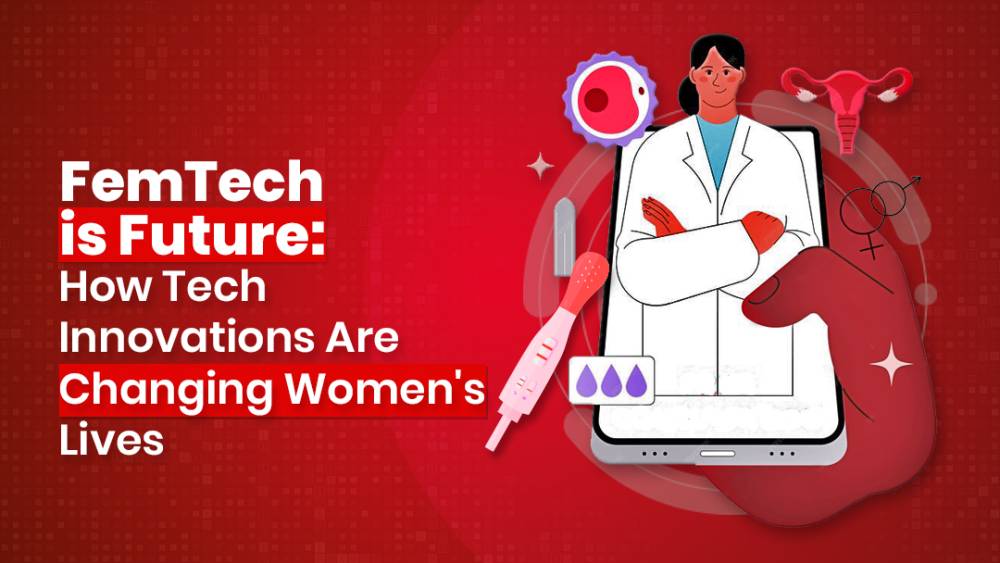
Women's health issues have been stigmatized, understudied, and poorly treated for far too long. Throughout history, doctors viewed men's bodies as the 'norm' and women's bodies as atypical. Before 1993, women were rarely included in clinical trials. According to the World Economic Forum of Switzerland, even now, women spend 25% more of their lives in poor health. However, ancient civilizations did not discriminate against women in this way. The 'Kahun Gynecological Papyrus,' the oldest medical text in Egyptian history, apparently written in 1825 BC, addresses topics such as conception, pregnancy, and contraception, providing concrete proof that ancient societies prioritized women's health.
Fortunately, in the present day, healthcare companies are making special efforts to address women's health. The United Nations data as of 2024 estimates the global female population at 4.04 billion, representing 49.76% of the world's population. It is high time to prioritize women's health. Currently, a new wave of innovation is revolutionizing the medical landscape, driven by technology designed specifically with women in mind: FemTech.
FemTech, an acronym for feminine technology, refers to a broad range of digital tools and products that cater to diverse facets of women's well-being. Period trackers, fertility monitors, pregnancy and parenting support applications, telemedicine services dedicated to women's needs, and wearable technology for tracking menstrual health and easing menopausal symptoms are a few examples of this.
At its core, FemTech is all about empowering women to take control of their health and well-being. From period-tracking apps to fertility monitors and menopause management tools, FemTech offers a wide range of solutions to address women's unique needs and concerns. Femtech products typically fall into one of six categories: medical devices, software, therapeutic drugs, consumer products, consumer service, or consumer apps.
In 2016, the term 'FemTech' was coined by Danish entrepreneur Ida Tin. While working in an open-minded environment, she identified a gap in women's healthcare. There was a lack of discourse around menstruation, menopause, pregnancy, and insufficient investments in family planning initiatives. This realization motivated Ida Tin to utilize technology to promote gender equality and introduce the term 'FemTech'.
In 2024, explaining the term 'FemTech' to Euro News, Ida Tin stated, "Femtech is technology addressing the needs that people with female biology have." She elaborated, "When we started out, we were thinking mostly about reproductive health. Now, I would say femtech also covers things where women are impacted very differently from men or non-proportionally are affected, like brain health or bone health."
The FemTech revolution is at its inception period. However, it holds significant potential to transform the healthcare landscape. Numerous FemTech companies have broken the taboos surrounding menstrual, sexual health, and pelvic care issues. These innovators are not only squashing century-old stigmas but also spearheading culturally sensitive and tailored healthcare solutions. For instance, some FemTech companies are catering specifically to underserved populations such as LGBTQIA+, women in low to middle-income countries, and black women, marking an important step towards inclusive and personalized healthcare. Now, let's explore the impacts FemTech is creating in the healthcare sector and society:
1) Empowerment and education: FemTech apps and devices provide women with knowledge about their health, empowering them to take control of their well-being. These innovations offer easy access to information, enabling women to gain a deeper understanding of their bodies and cycles.
2) Better access to healthcare: Telehealth platforms made for women are making healthcare more accessible, especially for those in geographically remote areas or with busy schedules. These FemTech platforms empower women to access better healthcare.
3) Customized healthcare: FemTech solutions can gather and analyze a multitude of data about each woman's health. This enables more personalized diagnoses, treatment options, and preventative measures to be implemented.
One of the most exciting aspects of FemTech is its potential for future growth and innovation. Currently, a new category within FemTech, known as MenoTech, is emerging. According to Forbes, by 2025, over 1 billion women worldwide will be experiencing menopause, comprising 12% of the total world population of 8 billion. Many women from Generation X, now in their late 40s and approaching menopause, are proficient in technology and digitally literate. So, they can easily adopt digital healthcare solutions. FemTech industry experts have identified the enormous potential in this market.
Even though FemTech is making strides significantly, a few obstacles still need to be addressed. Concerns about data privacy, overcoming regulatory barriers, and ensuring accessibility for all women are issues that need ongoing attention. However, no one can deny that FemTech has a bright future. According to an analysis by research and strategy consulting firm Frost & Sullivan released in March 2020, FemTech revenue is anticipated to reach 1.1 billion USD by 2024 and is projected to grow to a massive 1.186 trillion USD market by 2027. As technology continues to evolve and investment in the sector grows, we can expect even more innovative solutions that empower women, improve health outcomes, and redefine the landscape of women's healthcare.